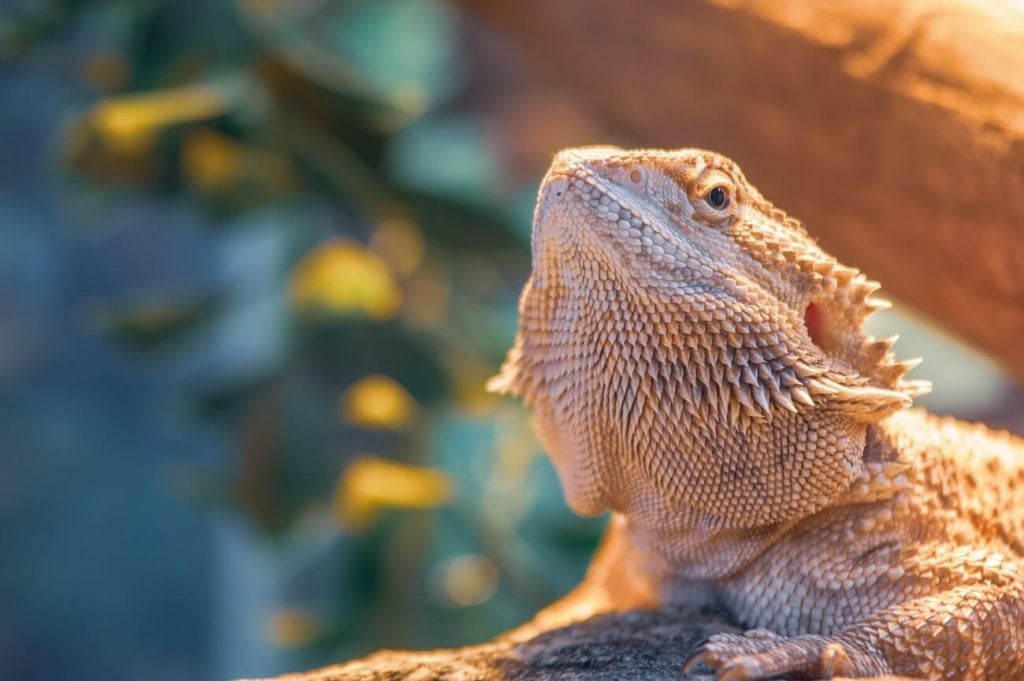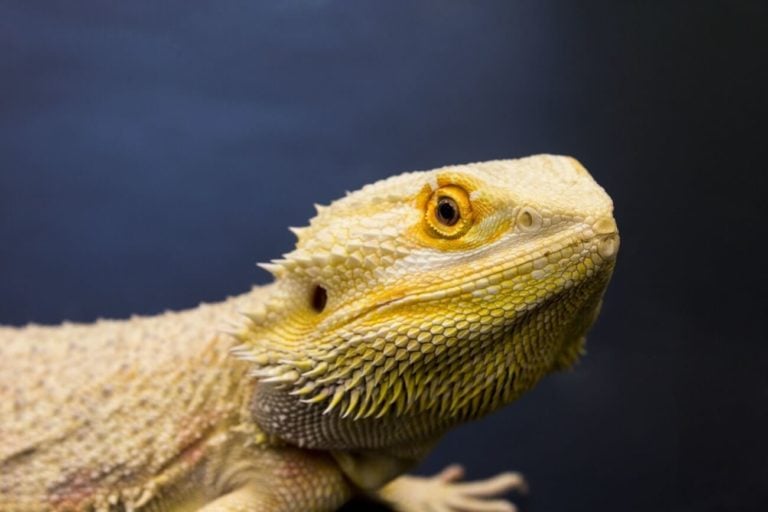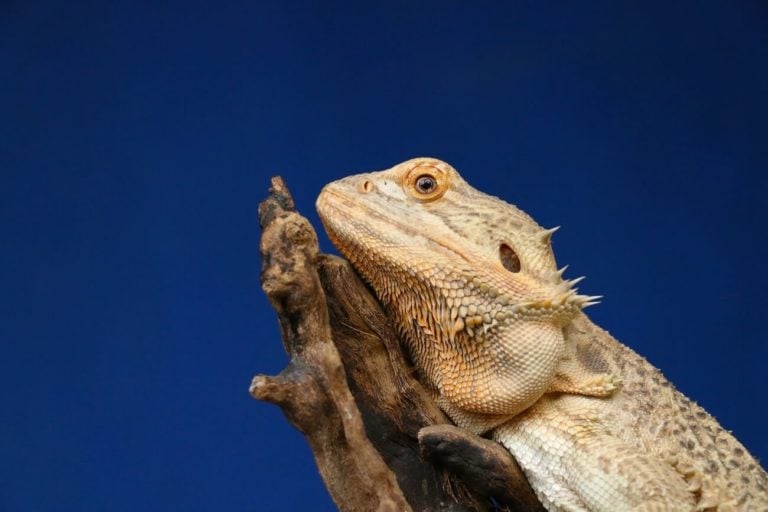Understanding bearded dragon poop is actually a very important skill all owners should have. The state of their poop can be a great indicator of their overall health, and help you catch any health issues before they become too serious.
But it’s not as simple as it seems. Bearded dragon poop can come in different sizes, shapes, and colors.
Not only that, but you’ll need to have a rough idea of how often they poop so you can quickly notice any irregularities.
Fortunately, this guide makes that whole process quite simple. You’ll learn what things should look like when they’re healthy, and how to diagnose a problem if they’re not.
Let’s begin!
Table of Contents
How Often Do Healthy Bearded Dragons Poop?
Bearded dragons may be little and cute, but be warned:
These creatures have a tendency to poop a lot!
When it comes to figuring out how often a bearded dragon poops, there isn’t a magic number. This is because a number of different factors that will influence the quantity.
These factors include their age, diet, health condition, environment, stress level, and brumation. Brumation refers to the hibernation period that cold-blooded creatures like bearded dragons tend to do during winter weather.
Keeping track of how often your bearded dragon poops, what the color and consistency of the poop is and other factors can be a great help to the owner in determining if their lizard is healthy or might be experiencing stress.
Their Age
The age of your bearded dragon will determine how often and how much they will poop. For instance, baby bearded dragons will poop more often than young ones or full-grown adults.
Owners can determine the approximate age of their beardie by using a scale chart.
If they measure 3 to 4 inches in length, they are most likely under 1 month of age. At 6 months they should be approximately 11 to 18 inches long. An adult dragon (at least 12 months old) is about 16 to 22 inches in length.
A baby (less than 3 months old) bearded dragon should be expected to poop at least once every day, and they can defecate up to 3 times a day depending on the various factors in the sections below.
This is because these babies need more frequent and higher protein-rich diets to keep up with their rapid growth rate.
For young bearded dragons from age 4 to 18 months, expect them to poop at least every other day. As they age towards 18 months, they often decrease their poop schedules to just 2 to 3 times a week.
Adult bearded dragons will poop anywhere from 1 to 7 times each week. This is if they are healthy, are not overly stressed, and are getting enough UVA and UVB light inside of their tanks.
Their Diet
The type of diet and food that your bearded friend eats also determines how much and when these creatures will poop.
If these reptiles eat a lot of calcium-rich foods like silkworms, they usually defecate or poop more often than ones that only consume crickets. This just one example of diet differences, but it’s a common one that many owners deal with.
Adult beardies that mostly consume crickets and maybe vegetable diets typically poop 1 to 3 times a week, and those that eat calcium-rich diets, like silkworms, may poop daily or even multiple times each day.
Expert Tip: When attempting to determine if these lizards are pooping appropriately, remember to assess their overall energy level and keep watch that their appetites remain within the normal range. If they’re not eating, that will obviously have an impact too.
Environmental Factors
Try to keep your bearded dragon’s enclosure within the expected levels of temperature gradients. Also, it is essential that your lizard get the proper amount of UVB and UVA light every day (this should be 10 to 12 hours each day)
The bearded dragon relies on daily exposure to essential natural light to help them easily digest their food properly. Fluctuations in light levels can interfere with their fragile digestive process.
Stick to the temperature ranges below to make sure your bearded dragon poops on a consistent and healthy schedule.
- Warm area: 80°F to 84°F
- Basking spot: 95°F to 100°F
- Cool, dark area: 80°F to 90°F
Expert Tip: We always recommend that owners invest in a separate digital thermometer to help them maintain the temperature. These are more accurate than a lot of ones that are built into lamps and heaters.
Stress Level
It is important for bearded dragon owners to assess their pets often to ensure that they are not overly stressed about something in their environment.
And one of the fastest and easiest ways to check for stress is to keep track of their poop schedule!
All reptiles, including bearded dragons, will react when moving to a different environment. It is common for these small creatures to not poop for up to several weeks after first being brought home. Even if you’re simply upgrading your bearded dragon to a more spacious and “better” enclosure, there might be a stress reaction as a result of the move.
Typically, once the bearded dragon gets used to their new environments they should resume their normal poop schedule as their stress levels even out.
Other factors like loud noise or other pets in the home can cause them to live in a constant state of stress as well. If they bite you that’s also another obvious sign that their poop regimen is potentially being impacted by stress. A black beard is a potential signal as well.
Brumation
Bearded dragons usually go into a period called brumation for up to 3 months (although those times can vary). This process is somewhat similar to hibernation that some warm-blooded animals, such as bears, go through during the winter months.
As you might have guessed, your bearded dragon will not be eating much during this time. As a result, they will also not be pooping much either.
It’s important for owners to research and keep track of the signs of impending brumation for their specific reptile to understand why their habits are changing.
What Does It Mean If They Won’t Poop?
If your bearded dragon stops pooping, it is important to figure out why.
As they age, their poop times and amounts will decrease. So if you notice a decrease in output as they get older, that’s nothing to worry about.
However, it’s a problem if they won’t poop at all.
This could be caused by increased stress levels or some kind of illness. This is why it’s important to start tracking their symptoms and behavior if you notice this happening.
Expert Tip: If your bearded dragon goes for an uncharacteristically long period of time without pooping you should contact your vet and follow their advice.
What Healthy Bearded Dragon Poop Should Look Like
Healthy bearded dragon poop is actually a mix of two kinds of waste. The first is solid digested food waste, and the second is yellow to whitish urine that has a softer consistency.
If the color, consistency, amount, size, and other elements with your bearded dragon’s poop changes, it is important to check for diseases and other causes.
If the poop becomes watery, this too could indicate a problem (more on that later).
Abnormal Colors To Look Out For
Bearded dragon owners should be on the lookout for abnormal poop colors since these can indicate a potential health concern. Common colors you’ll see are:
- Green
- Yellow
- Red
- Black
As we’ll explain a bit more in the following sections, not all colors mean something is wrong with your bearded dragon. Sometimes the change in color can simply be caused by the kind of food they ate!
Green
Vegetables and green plants have chlorophyll which gives these items their green color. Many lizard pellet type foods also have green dyes that can turn the poop of your bearded dragon green.
Additionally, there are certain medicines that also have the tendency to turn poop green.
Also, these lizards often ingest sand from their tanks. If the sand is colored it could change the shade of their poop.
If your bearded dragon is otherwise acting normally, has a good appetite and appears well, there is likely not a reason to be concerned.
However, if the green poop is runny or watery and has a foul odor (worse than usual), the lizard may have contracted either a parasite or a bacterial infection such as Salmonella which is common in reptiles.
Take a fecal sample and contact your vet to do a test for a parasitic or bacterial infection that may need treatment with medicines.
Yellow
Yellow poop could also be an indicator that your beardie ingested a yellowish substance like yellow squash or yellow wax beans. If the reptile is a female, the yellowish substance might be an egg that has not been fertilized.
In this case, don’t try to pull out the egg. Make a lay box and set in a quiet area. Encourage your pet to drink water and eat foods or supplements high in calcium if stressed.
You can try gently bathing your bearded dragon. If she doesn’t improve, she needs to be treated by a veterinarian to remove the eggs safely.
Male bearded dragons often develop a seminal plug which is also string-like and yellowish in color. Again, gentle bathing and soaking of the vent area can soften the substance and help clear it.
Red
Red bearded dragon poop could simply indicate the ingestion of food with red dye. However, it could be blood smears (this is even more likely if your pet is having discomfort or can’t poop).
Constipation is common with these creatures, and this can cause intestinal polyps or tears that might leave bloody streaks in the creature’s poop.
Black
Older poop can turn darker, and beardies might have black poop if they are eating primarily insects without many vegetables.
If the poop is black and seems too watery, smells bad, or has other abnormalities, it could mean the bearded dragon has developed a parasitic infection that will need to be treated by a vet.
Take a fresh (less than 2 hours old) fecal sample, refrigerate it and take to vet for testing. Parasites may not show unless the sample is fresh.
What If It’s Runny?
Runny poop or diarrhea could indicate a change in diet and will usually resolve itself. However, if this doesn’t improve in a few days you should take it seriously.
If there is pus, blood, or a foul smell to go along with being runny that should elevate your level of concern. This might be paired with your bearded dragon developing a poor appetite, appearing listless and sick, or losing weight.
The only way to get to the bottom of this is to call your vet and take the recommended steps.
Start Keeping Track!
Now that you know what to look for when it comes to bearded dragon poop, it’s time for you to start keeping tabs.
Making this a habit is easier than it seems. The more you check it, the sooner it will become second nature!
Doing this will allow you to quickly understand the health of your beardie from a high level, and enable you to act fast if something is wrong.



